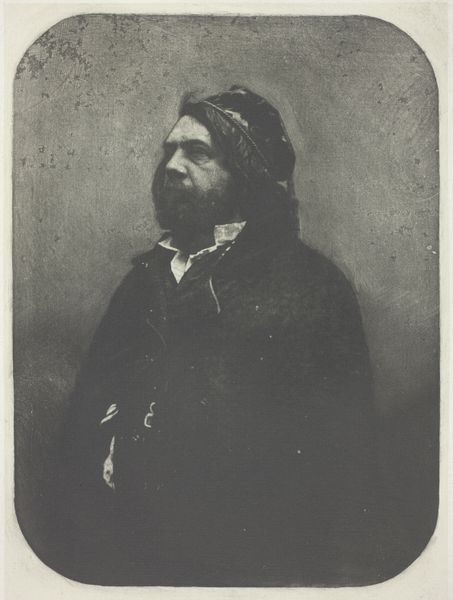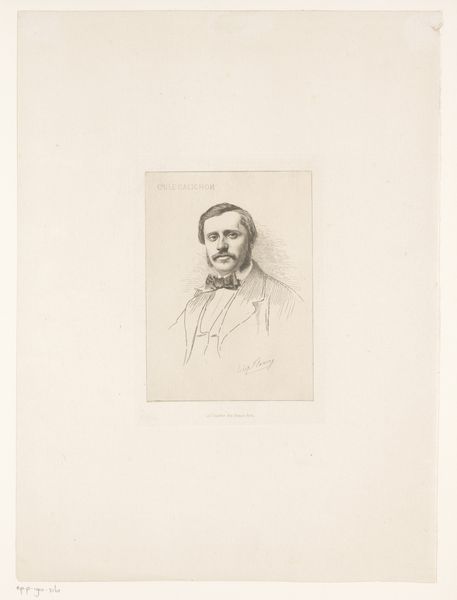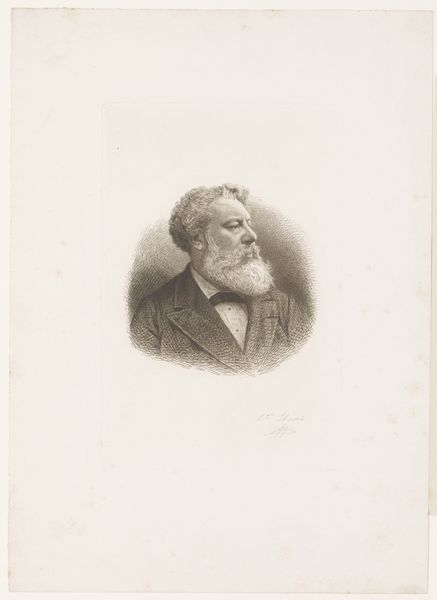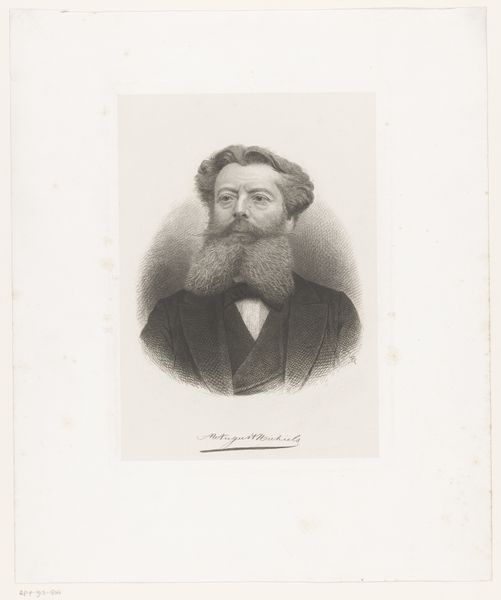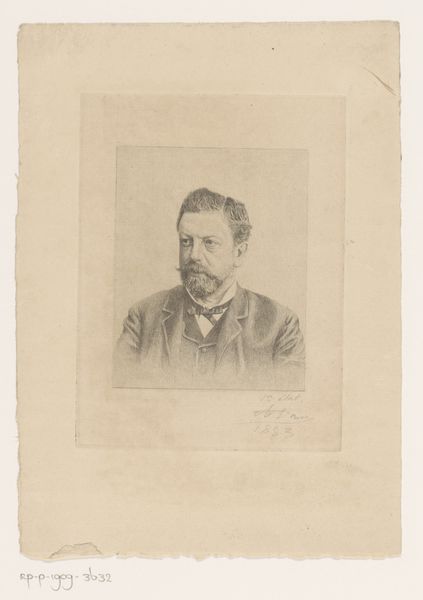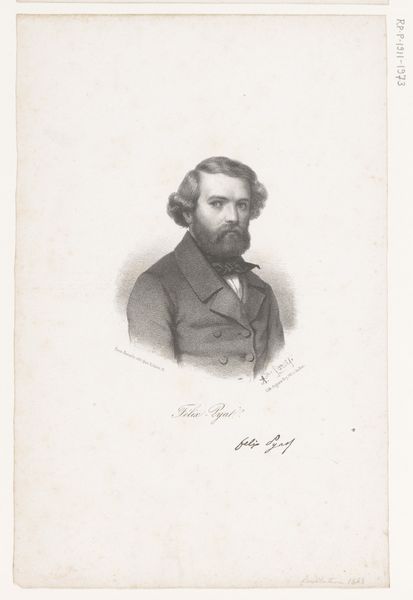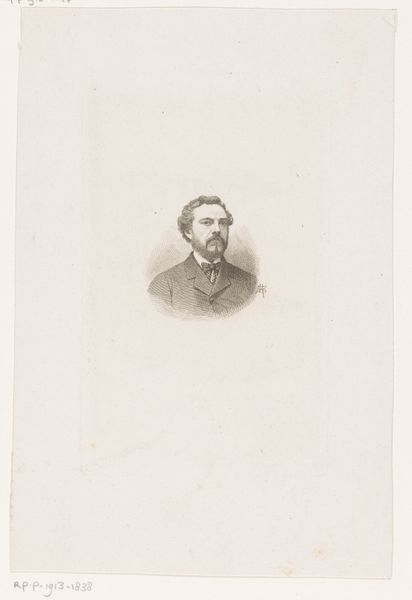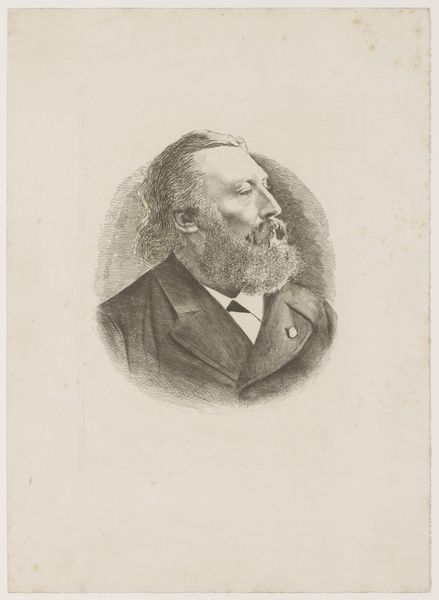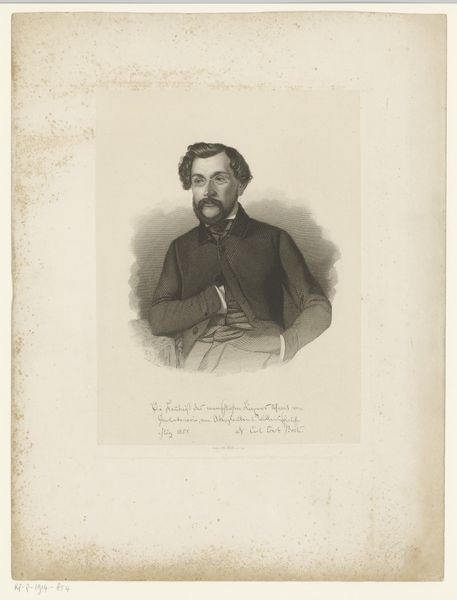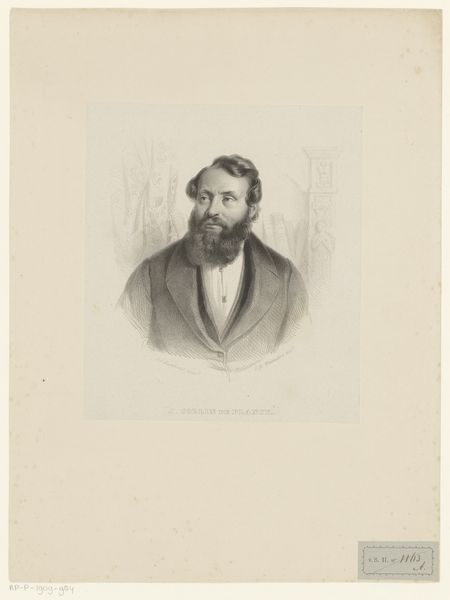
drawing, print, etching, paper, graphite
#
portrait
#
drawing
# print
#
impressionism
#
etching
#
paper
#
pencil drawing
#
graphite
#
graphite
Dimensions: 90 × 82 mm (image); 160 × 113 mm (plate); 235 × 153 mm (sheet)
Copyright: Public Domain
Editor: This is "Portrait of Daubigny," an etching made by Léopold Massard in 1879. There's something so direct about it, so unflinching in its gaze. What can you tell me about its place in art history? Curator: It’s tempting to view this simply as a portrait, but understanding its context illuminates the relationship between artist and subject and the power dynamics involved in representing someone like Daubigny. This etching was created late in Daubigny's life. Think about the market for prints and portraiture in the late 19th century. Editor: So, prints were a way to make art more accessible? Curator: Exactly. This etching allowed for wider circulation, thus cementing Daubigny’s image and legacy. But consider also, who was consuming these images, and what did Daubigny, the landscape painter, represent to them? Editor: That’s fascinating! I never thought about prints as a way of constructing a painter's public image. Curator: Massard’s work actively participates in this cultural construction of Daubigny. It elevates his status through readily accessible portraiture, making Daubigny's face familiar and admired in bourgeois households. Can you see hints of that elevation within the art style itself? Editor: I guess the detail given to his face and clothing elevates him from a simple worker to a bourgeois citizen of the era. Curator: Precisely. And reflecting on the social landscape, you'll see an artist like Daubigny represented in a context much like our own. This allows the consumption of the piece by a growing audience of wealthy Parisians. Editor: That's changed how I see this work entirely. I hadn't considered the social and political forces at play. Thanks! Curator: My pleasure. Understanding the mechanics of visibility offers a potent lens for examining artistic production and consumption throughout history.
Comments
No comments
Be the first to comment and join the conversation on the ultimate creative platform.
